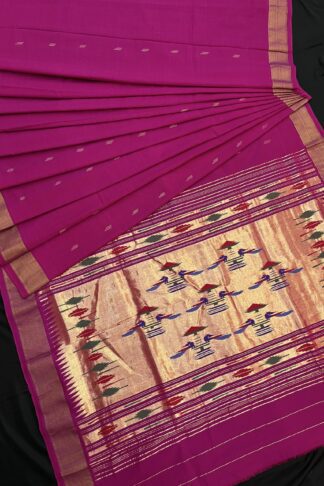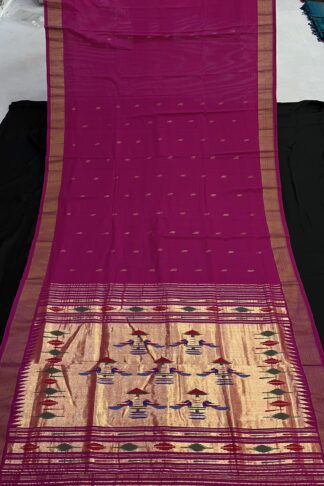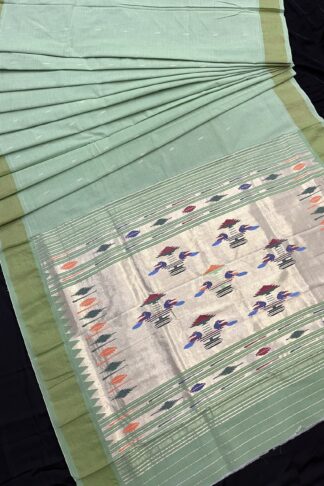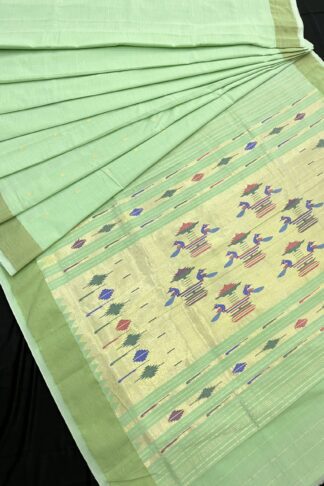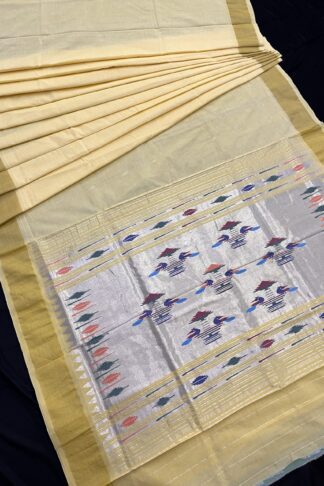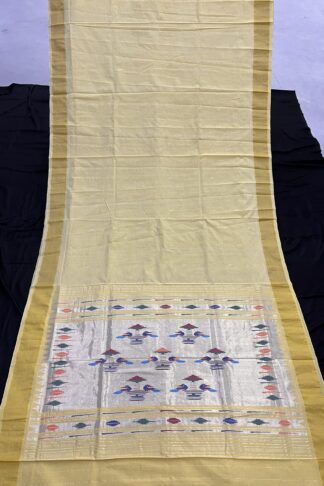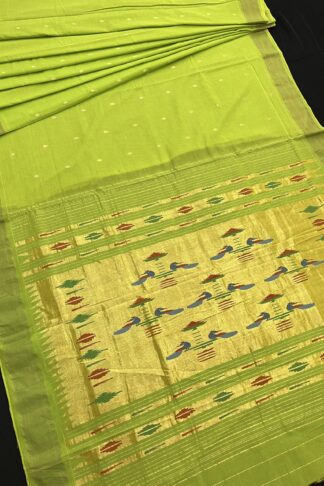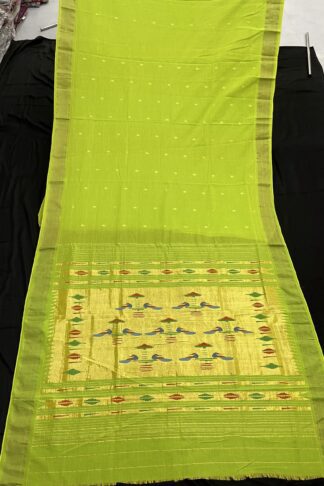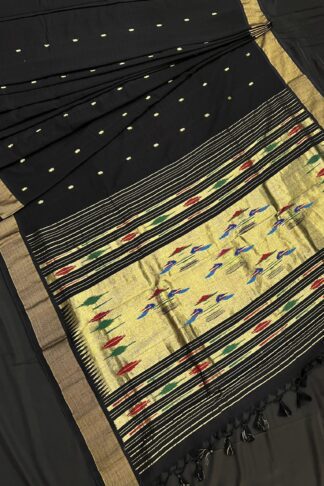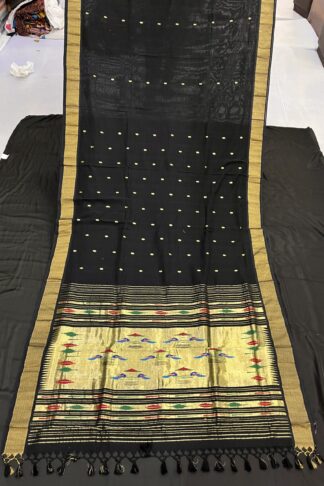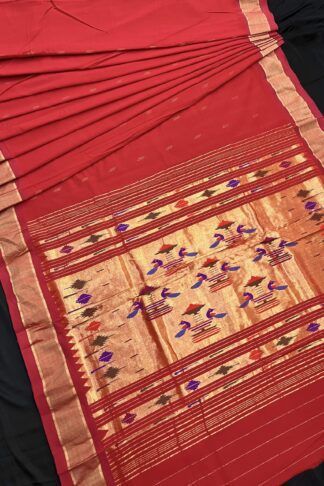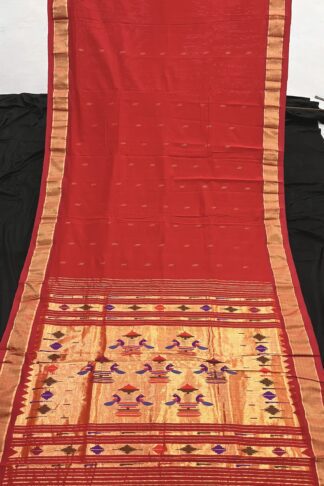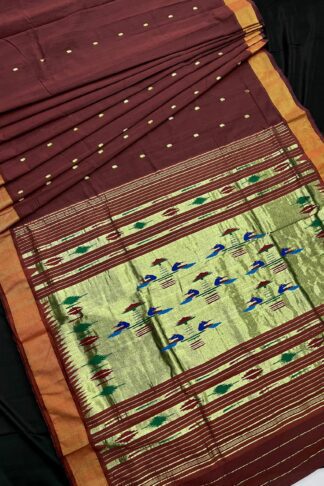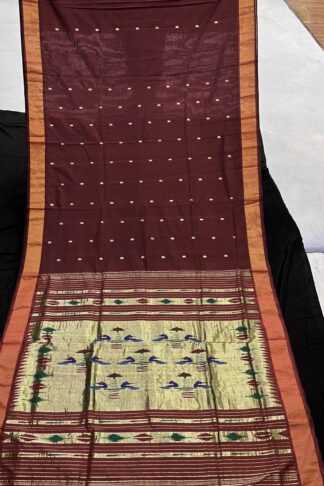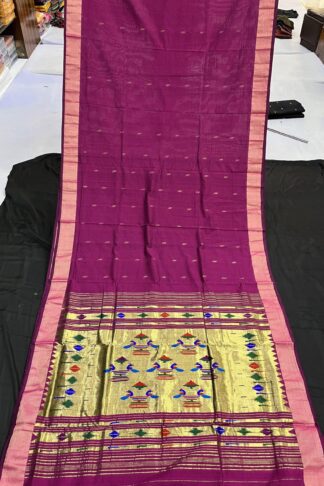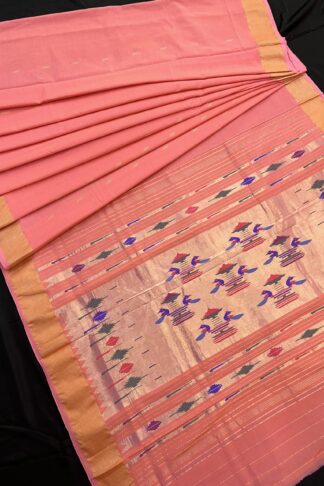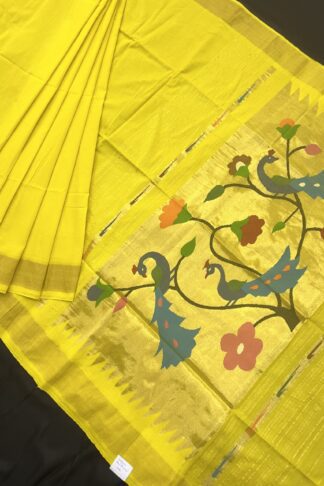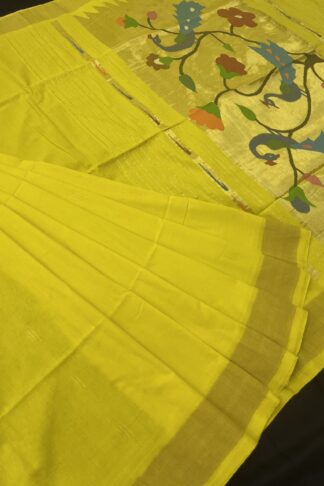Paithani Sarees
Paithani is a variety of sari, named after the Paithan town in Aurangabad from state of Maharashtra where the saree was first made by hand. Present day Yeola town in Nashik, Maharashtra is the largest manufacturer of Paithani.
Due to proximity to the Ajanta caves, the influence of the Buddhist paintings can be seen in the woven Paithani motifs:
The Kamal or lotus flower on which Buddha sits or stands
The Hans motif
The Ashraffi motif
The Asawalli (flowering vines), became very popular during the Peshwa’s period.
The Bangadimor, peacock in bangle
The Tota-Maina
The Humarparinda, peasant bird
The Amar Vell
The Narali motif(coconut), very common
Small motifs like circles, stars, kuyri, rui phool, kalas pakhhli, chandrakor, clusters of 3 leaves, were very common for the body of the sari.
Paithani is a sari made of silk and zari. It is a plain weave, with weft figuring designs according to the principles of tapestry. Traditionally, Paithanis had a coloured, cotton muslin field that often contained considerable supplementary zari patterning. However, in the 19th century, silk fields were also woven.
Showing 1–16 of 60 resultsSorted by popularity
Showing 1–16 of 60 resultsSorted by popularity

